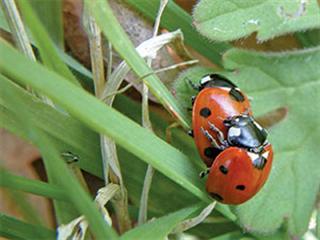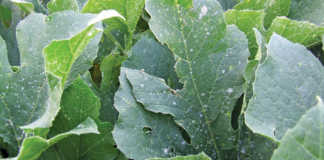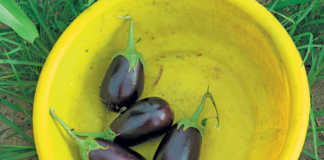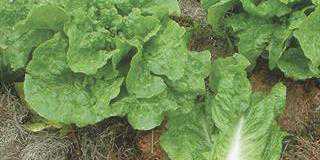
Kingdom: Animalia
Phylum: Arthropoda
Class: Insecta
Order: Hemiptera
Sub order: Sternorrhynca
Superfamily: Aphidoidea
Family: Aphididae
Distribution: Worldwide. There are more than 4 000 species in the aphid family.
Description
An aphid infestation usually starts with a few adults feeding on a plant. If the plant is a suitable host, these scouts deposit a dozen or so wingless nymphs, through a form of asexual reproduction called parthenogenesis, on the plant before searching out further host plants.
The nymphs feed on the sap and grow. Almost all of them are females, which can produce numerous offspring per cycle.
As the cycle is repeated throughout the season the population grows exponentially. Soon the plant is covered in aphids. Aphids take in a large quantity of sap to get adequate nutrition. They excrete a deposit called honeydew, that contains a high percentage of sugars and is fed upon by ants and wasps.

Left to right: Aphids feed on plant tissue, sucking the sugary sap out of the host plant. Aphids can be found on all parts of a plant. In a mutually beneficial relationship, ants harvest the sugary honeydew excreted by aphids.
Because of the amount of sap sucked from the plant, it starts to wilt and can die. The aphids then move on to the next plant. Aphids can target various plant species but most aphids are fairly host specific. Black bean aphids (Aphis fabae), wheat aphids (Diuraphis noxia) and melon aphids (Aphis gossypii) are serious crop pests. They also transmit certain viral and bacterial diseases.
Reproduction
The aphid has a complex life-cycle and can reproduce both sexually and asexually. In warm climates or greenhouses, reproduction is asexual with females giving birth to live young. When temperatures drop just before winter sexual females mate with males and lay eggs, which they deposit on plants to overwinter. The eggs hatch out as wingless females the following summer.
Methods of control
- Chemical – Most commercial insecticides used in aphid control work on contact and are absorbed into the insect’s body. When spraying, wet the entire plant, including the buds, to reach hidden individuals.
- Natural predators – These include adult ladybirds and their larvae, lacewing larvae, tachina flies, parasitic wasps, hoverfly larvae, tree crickets, young assassin bugs and small spiders.
During wet or humid conditions, fungal infections can kill entire aphid colonies, turning the dead aphids a brownish colour. Biological insecticides based on the fungal microbes are being developed for target-specific control. – Paul Donovan
This series is intended primarily as a guide to identifying pests. The control methods discussed here are merely suggestions. For help with area- or crop- specific control, consult an agricultural extension officer. Paul Donovan is a biologist who has worked with reptiles and insects for more than 30 years in zoological collections in the UK. He is currently based in Botswana, where he advises farmers on the use of biological control agents. Email him at [email protected]













